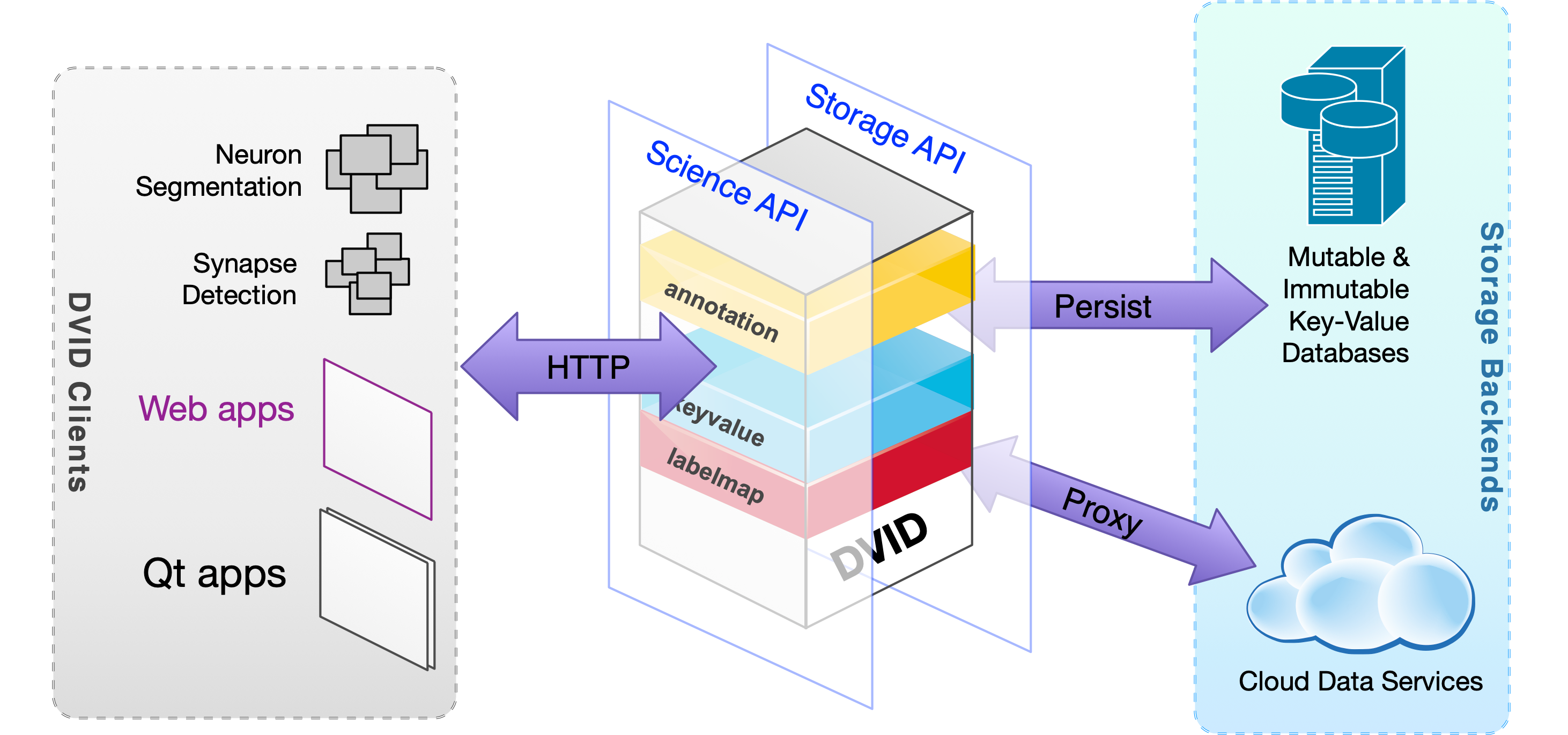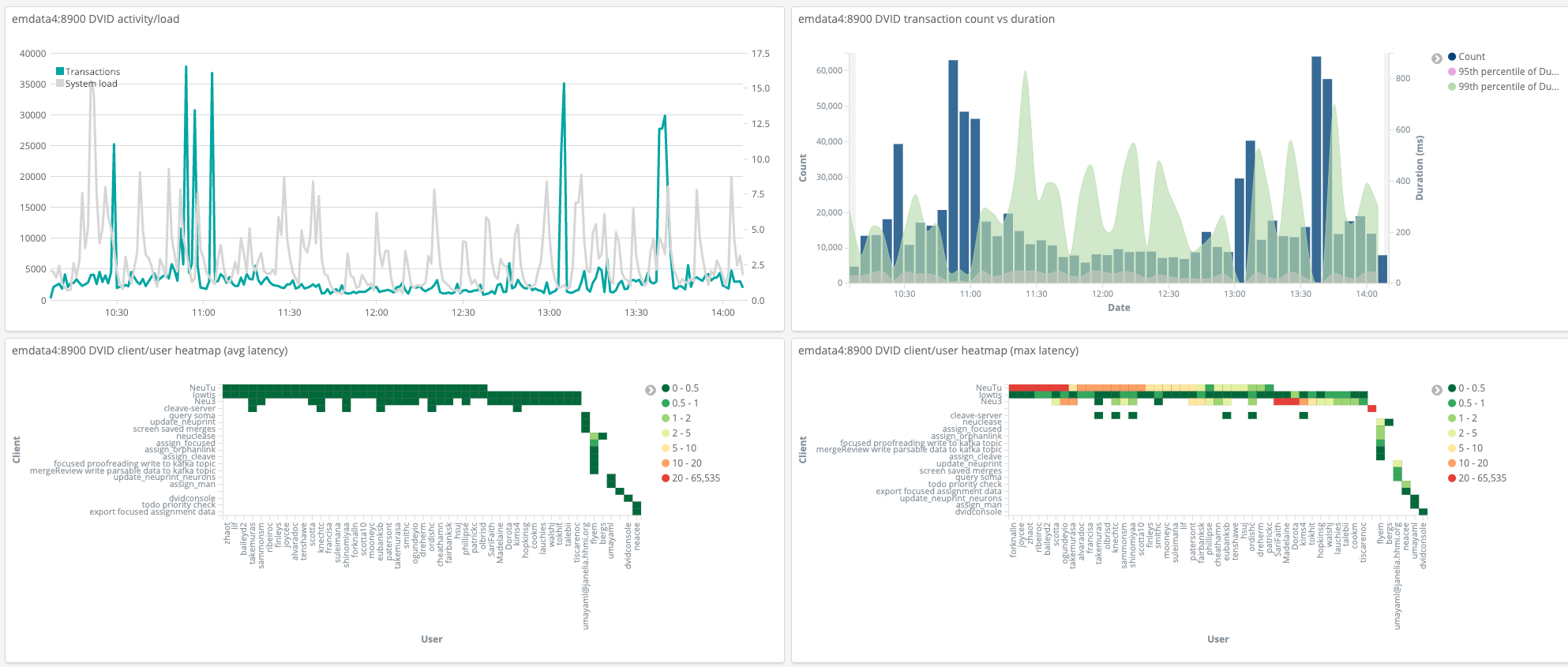What is DVID?
DVID is a distributed, versioned, image-oriented dataservice written to support Janelia Research Campus's brain imaging, analysis and visualization efforts. It's goal is to provide:
- Easily extensible data types that allow tailoring of access speeds, storage space, and APIs.
- The ability to use a variety of key-value stores from local, fast embedded leveldb on a NVMe SSD to a petabyte-scale store like Google Cloud Storage.
- A framework for thinking of distribution and versioning of data similar to distributed version control systems like git.
- A stable science-driven API that can be implemented either by native DVID data types and storage engines or by proxying to other connectomics services like Google BrainMaps or OpenConnectome.

DVID aspires to be a "github for large image-oriented data" because each DVID server can manage multiple repositories, each of which contains an image-oriented repo with related data like an image volume, labels, and skeletons. The goal is to provide scientists with a github-like web client + server that can push/pull data to a collaborator's DVID server.
Although DVID is easily extensible by adding custom data types, each of which fulfill a minimal interface (e.g., HTTP request handling), DVID's initial focus is on efficiently handling data essential for Janelia's connectomics research:
- image and 64-bit label 3d volumes, including multiscale support
- 2d images in XY, XZ, YZ, and arbitrary orientation
- multiscale 2d images in XY, XZ, and YZ, similar to quadtrees
- low-latency sparse volumes corresponding to each unique label in a volume, that can be merged or split
- point annotations (e.g., synapse elements) that can be quickly accessed via subvolumes or labels
- label graphs
- regions of interest represented via a coarse subdivision of space using block indices
- 2d and 3d image and label data using Google BrainMaps API and other cloud-based services
- supervoxel-aware blobstore that can return tar files for all supervoxel-based data associated with a label
- key-values which can be used like a versioned file system
Each of the above is handled by built-in data types via a Level 2 REST HTTP API implemented by Go language packages within the datatype directory. When dealing with novel data, we typically use the generic keyvalue data type and store JSON-encoded or binary data until we understand the desired access patterns and API. When we outgrow the keyvalue type's GET, POST, and DELETE operations, we create a custom data type package with a specialized HTTP API.
DVID can write mutation and activity logs to Kafka. At Janelia, we process activity logs in kafka to view DVID performance in Kibana.

DVID is written in Go and supports different storage backends, a REST HTTP API, and command-line access (likely minimized in near future). Some components written in C, e.g., storage engines like Leveldb and fast codecs like lz4, are embedded or linked as a library.
DVID has been tested on MacOS X, Linux (Fedora 16, CentOS 6, Ubuntu), and Windows 10+ Bash Shell. It comes out-of-the-box with an embedded leveldb for storage although you can configure other storage backends.
A web console is available to browse the repositories and view the DAG, logs, and data instances.
Command-line and HTTP API documentation can be found in help constants within packages or by visiting the /api/help HTTP endpoint on a running DVID server.